38+ Sample Exit Interview Forms
-
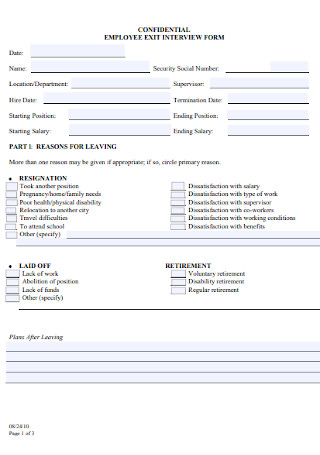
Employee Exit Interview Form
download now -
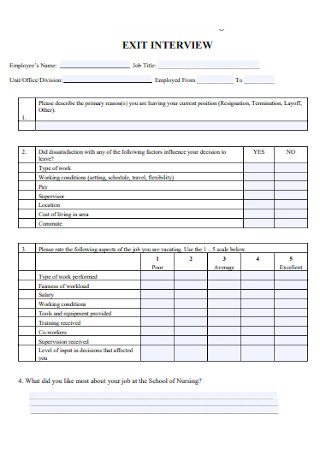
School Exit Interview Form
download now -
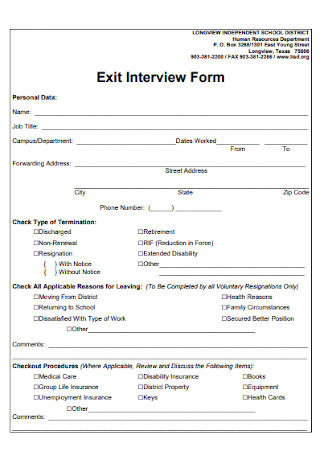
Personal Exit Interview Form
download now -
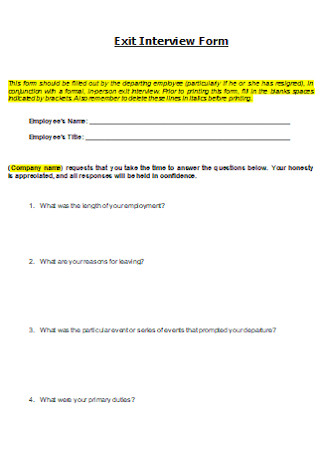
Simple Exit Interview Form Template
download now -
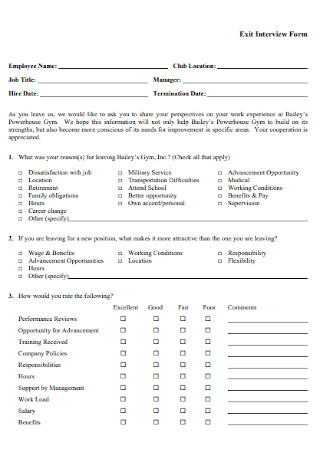
GYM Exit Interview Form
download now -
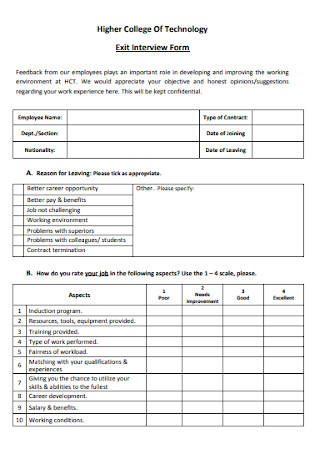
College Of Technology Exit Interview Form
download now -
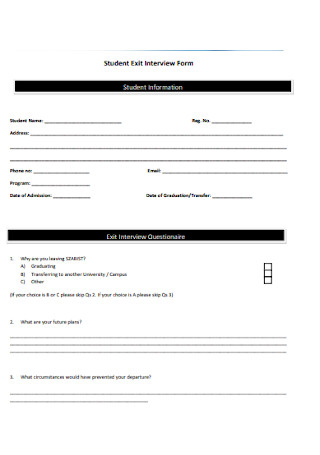
Student Exit Interview Form
download now -
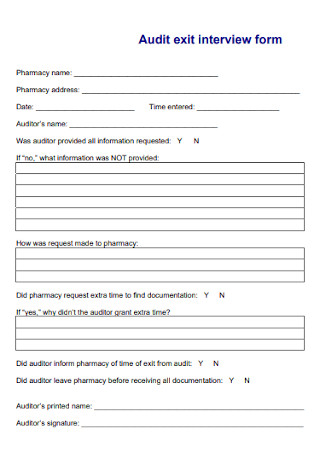
Audit Exit Interview Form
download now -
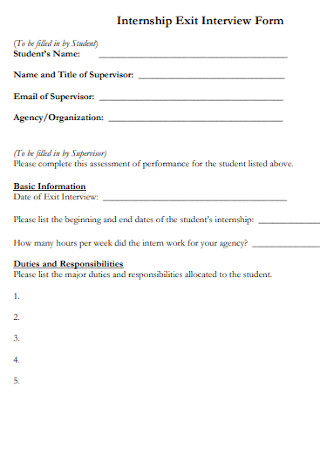
Internship Exit Interview Form
download now -
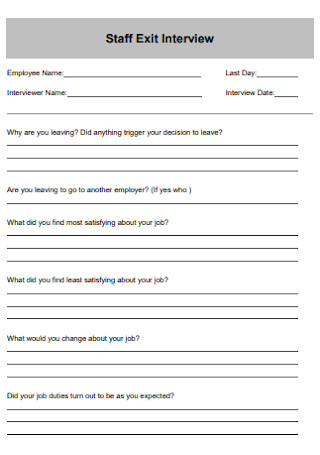
Staff Exit Interview Form
download now -
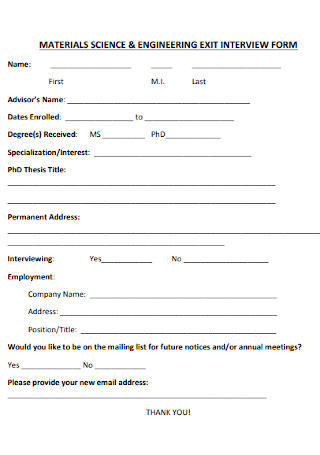
Engineering Exit Interview Form
download now -

Exit Suvey Interview Form
download now -
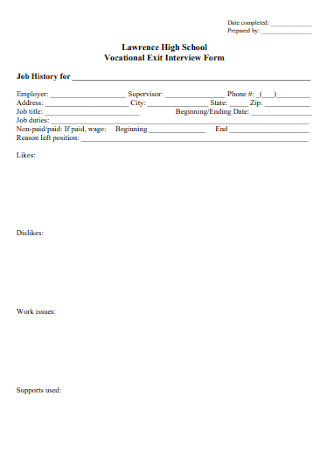
Vocational Exit Interview Form
download now -
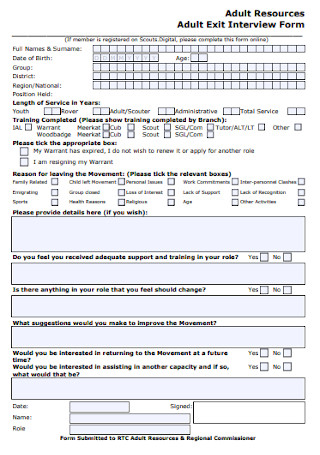
Adult Exit Interview Form
download now -

Printable Exit Interview Form
download now -
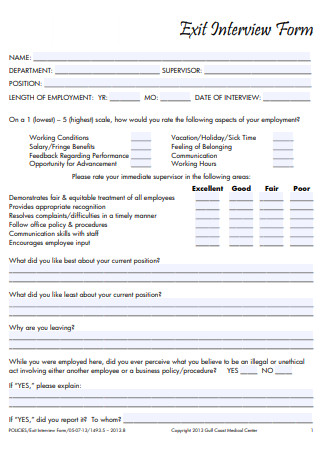
Professional Exit Interview Form
download now -
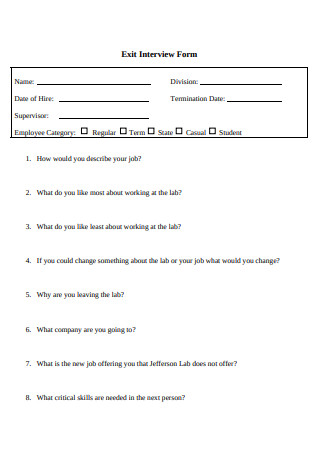
Exit Interview Form in PDF
download now -
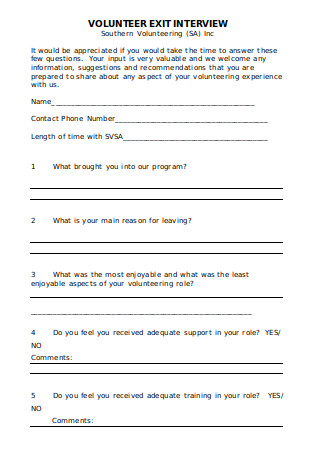
Volunteer Exit Interview Form
download now -
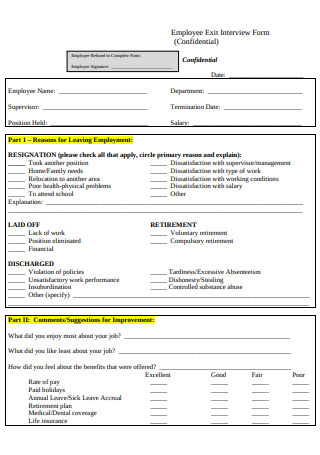
Basic Employee Exit Interview Form
-

Exit Interview Form Format
-
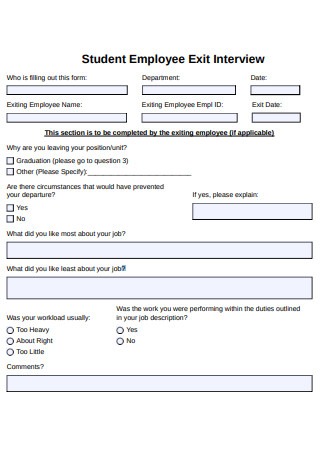
Student Employee Exit Interview Form
-

Exit Interview Feedback Form
download now -
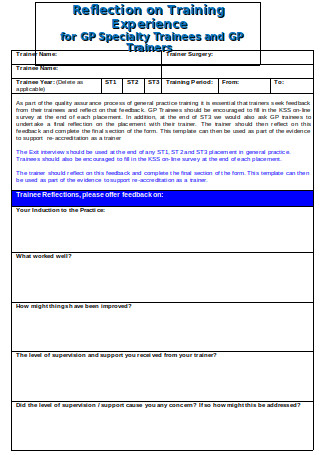
Trainee Exit Interview Form
download now -

Exit Interview Questionnaire Form
download now -
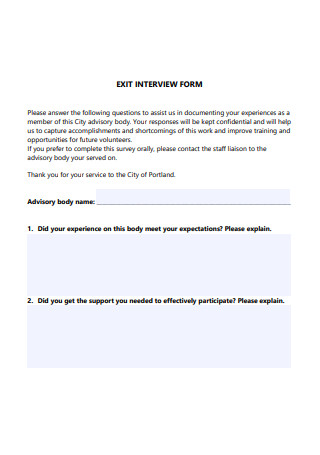
Formal Exit Interview Form Template
-
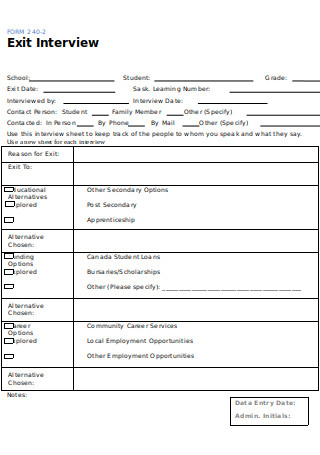
Effective Exit Interview Form
download now -
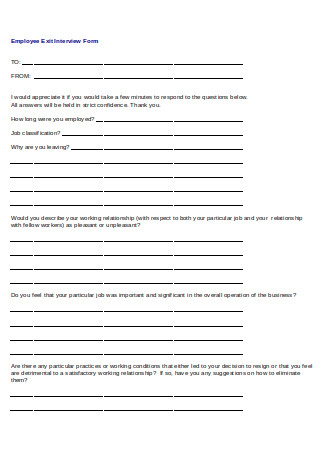
Simple Employee Exit Interview Form
download now -
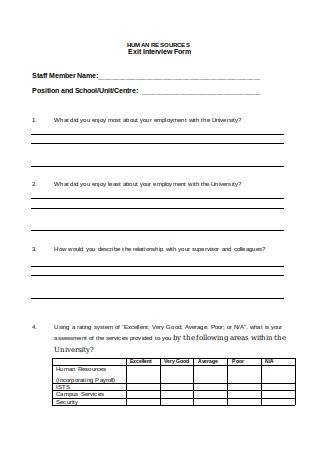
Exit HR Interview Form
download now -
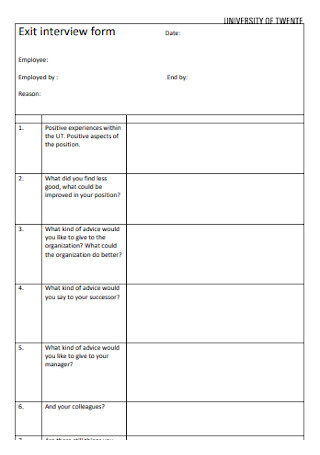
University Exit Interview Form
download now -
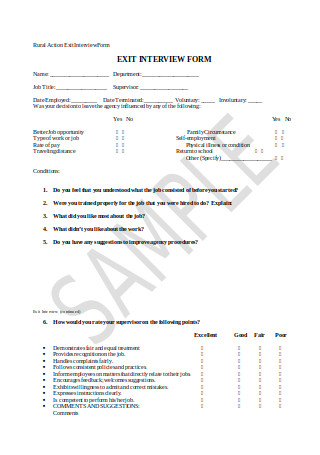
Rural Exit Interview Form
download now -

School Exit Interview Form Template
download now -
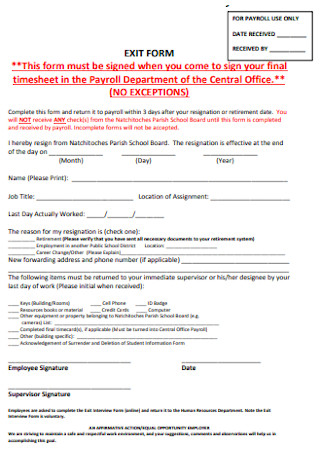
Sample Exit Interview Form Template
-

Exit Interview Form for Graduating Students
-
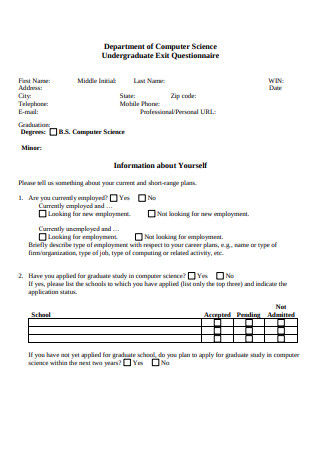
Undergraduate Exit Interview Form
-
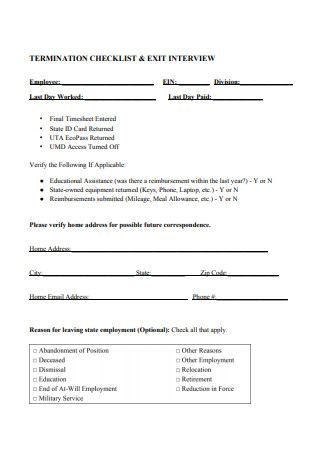
Termination Exit Interview Form
-
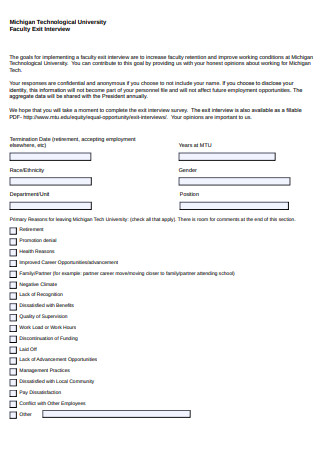
Faculty Exit Interview Template
-
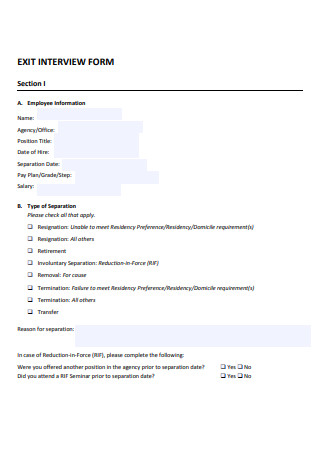
Standard Exit Interview Form
-
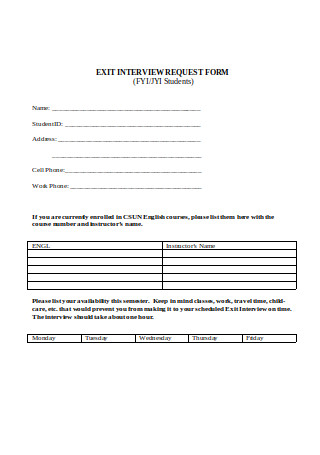
Exit Interview Request Form
-
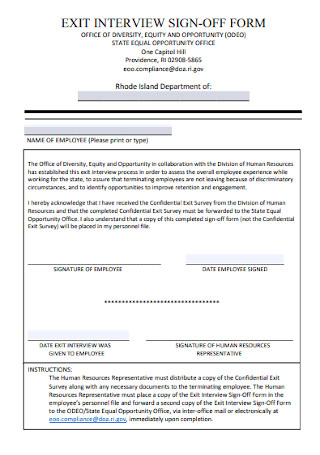
Exit Interview Sign in Form
download now
FREE Exit Interview Form s to Download
38+ Sample Exit Interview Forms
Exit Interview Forms: What Are They?
Hello, Goodbye: Introduction to the Exit Interview Process
How to Create Exit Interview Forms
FAQs
What is the whole point of an exit interview?
Who fills out the exit interview form?
How do you decline an exit interview?
Exit Interview Forms: What Are They?
First things first, an exit interview refers to the final meeting with an employee who is bound to leave the company for good. Although the final interview is not exactly mandated by law, it is still practiced and encouraged by most of the HR department. That way, the business can determine internal and external problems that need to be addressed and solved. Meanwhile, exit interview forms exist to observe a smooth and productive interview. The exit interview form serves as your guide to managing interviews as it is outlined with the questions to ask for the departing employees. What is even better? The forms can be your source of honest feedback from soon-to-be former workers.
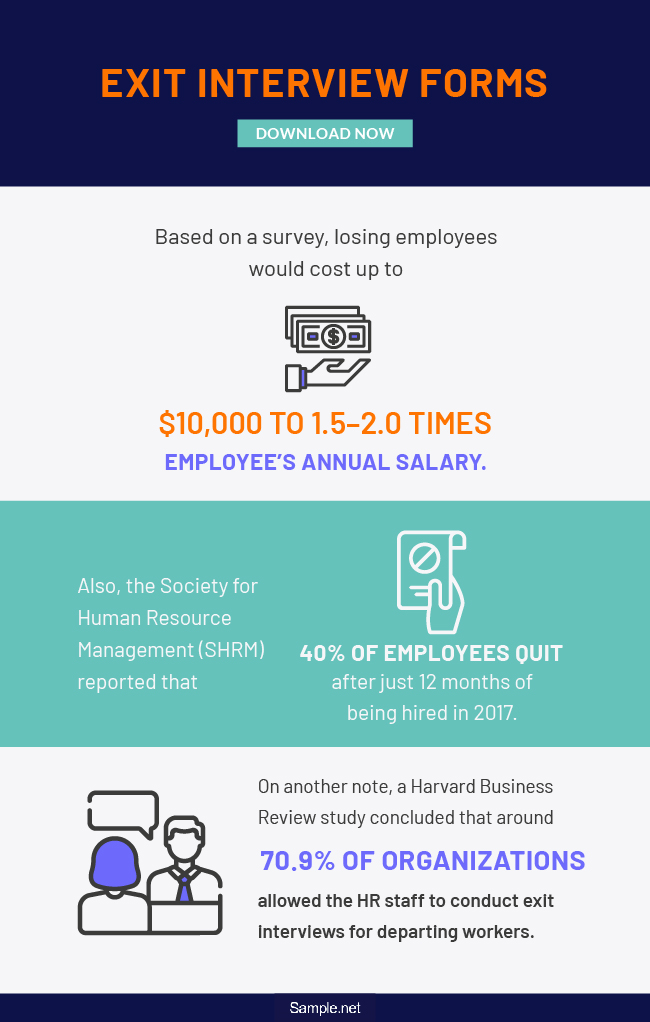
Based on a survey, losing employees would cost up to $10,000 to 1.5–2.0 times the employee’s annual salary.
Also, the Society for Human Resource Management (SHRM) reported that 40% of employees quit after just 12 months of being hired in 2017.
On another note, a Harvard Business Review study concluded that around 70.9% of organizations allowed the HR staff to conduct exit interviews for departing workers.
Why Is an Exit Interview Form Important?
Exit interview forms are essential to gather honest reviews and useful information from the soon-to-be ex-workers. For example, what if a superstar employee or someone who has done excellently at work decides to resign? Since that employee is valuable, the employer would want to know their reason behind the resignation. Via the exit interview, the employer might learn that overworking, poor management, and low salary caused the decision. So, managers can learn from such insights by improving operations, which will, in turn, make the rest of the employees stay in business.
Also, Harvard Business Review’s research survey found out that 70.9% of organizations allowed the HR to manage exit interview for soon-to-be ex-employees. And that big percentage proves how businesses value exit interviews. More so, a form marks as your reliable questionnaire. Instead of being unsure of what to ask for former employees, let the exit interview form guide you from what questions to ask first until last. Most importantly, the findings in an exit interview evaluation will help companies be nurtured. How so? By fixing mistakes and enhancing operations.
Hello, Goodbye: Introduction to the Exit Interview Process
It was reported that 40% of workers quit after 12 months of being hired in 2017. And SHRM’s survey proves that there is no guarantee that anyone who applies to a company would stay for long. This result leads us back to why an exit interview is necessary. In case you are still new to an exit interview, let us introduce you to the process. Generally, a company exit interview process comes with the following steps:
How to Create Exit Interview Forms
Besides knowing how the exit interview process works, do you know what is inside an exit interview form? Since you already know about the form’s meaning and importance, proceed to create exit interview forms themselves. With downloadable sample templates for grabs, things could not get any easier in making the form. In just five steps, you can already make a standard exit interview form.
Step 1: Create an Introductory Statement
Have you checked our sample templates already? Explore and choose which exit interview form template matches your needs from simple to sophisticated examples. And after choosing, begin the form with an introductory statement. Lengthy introductions are unnecessary, though. Start by ensuring the “Exit Interview Form” label is found at the title. And that you mention the form’s purpose. That way, employees will know what the exit interview’s intention is.
Step 2: State the Policies, Procedures, and Reminders
For the serious part, incorporate every policy, procedure, and reminder in the form. Such details clarify what is allowed and prohibited in the first place. An example is when a company already has a policy that anyone terminated, whether voluntarily or involuntarily, should receive an exit interview. Thus, everyone is reminded that the final interview is required. More so, the procedures and reminders are critical to settle out how to process the employee’s final pay, certificate of employment, and others.
Step 3: Ask the Departing Employee’s Basic Details
An exit interview form would not be complete without questions. Begin with the basic questions which identify the departing employee. Name, contact details, and job title would suffice. Do not forget to include the actual date the employee started to work and the separation date. The same goes for how long the employee worked because the total service length will also be recorded.
Step 4: Ask Away
Besides the basic info, do not hesitate to ask the most critical points in an exit interview. Some questions can get too serious, so interviewers should be smart by breaking the ice and observing positive vibes along the way. Why are you leaving? Did you already apply to another company? And were you satisfied with the job in general? Those are some examples to ask away. But, be sure to observe a flow in asking. Arrange the questions in the right order to produce a smooth interview.
Step 5: Polish Everything
After listing all those questions, mind the format. For example, you need not enumerate questions only. Some forms have boxes for comments and choices for employees to select their answers. Also, you can add a survey to check the departing worker’s job satisfaction in the company. Most importantly, polish everything down from the content, design, format, and presentation. Do you think the form is already informative enough? And is there still any way to improve it? Launch the forms when you are satisfied.
FAQs
What is the whole point of an exit interview?
Organizations vary in terms of their purpose in conducting exit interviews. Generally, the interview helps in assessing the employee’s overall experience and terminating them on a positive note. More so, exit interviews and risk management come hand in hand.
Who fills out the exit interview form?
An employer can manage exit interviews in different ways. One, HR asks the questions and jots down the worker’s answers in the interview. On the other hand, the employee may fill out the form before the exit interview. After that, the employee’s answers will be discussed by the manager in the final meeting.
How do you decline an exit interview?
Even if you are very polite to look for an excuse to decline an exit interview, remember that it is a disrespectful act. You can reschedule the interview or go to the interview right away. Answering questions and ending things in the right terms with the company should not be seen as too difficult anyway.
If there is an opening, there is also closing. Just like the workforce cycle, it starts with a job interview down to an exit interview. And like work, there are policies and disciplinary actions to take for anyone’s exit. Use exit interview forms to end someone’s departure on a positive note and learn things that can help the company. Because as what author Michael Bergdahl said, “The goal of exit interviewing is to learn from the past, so you don’t repeat the mistakes in the future.”
